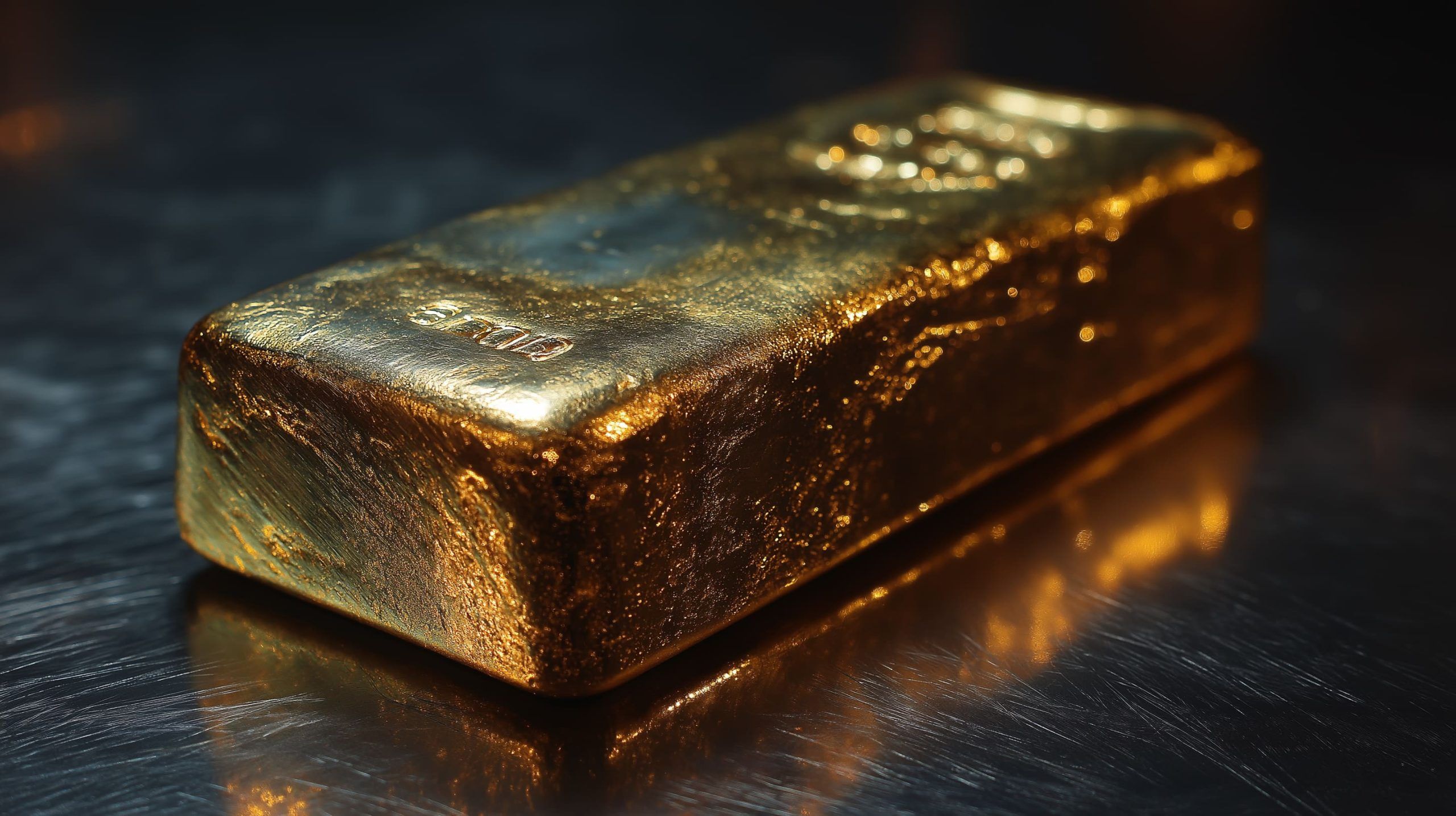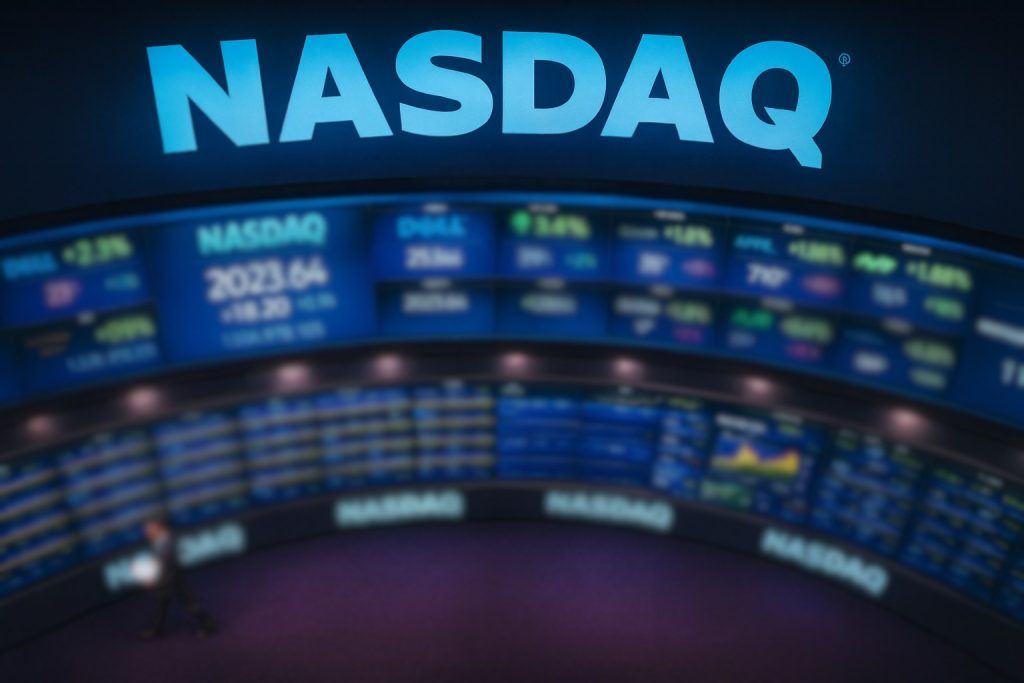- Historic highs & sudden plunge: Gold prices skyrocketed to an all-time peak above $4,380 per ounce in late October 2025, then abruptly tumbled over 3% the next day – the steepest one-day drop in nearly five years [1]. Spot gold fell from a record $4,381/oz on Monday to around $4,203/oz on Tuesday amid a wave of profit-taking [2].
- 2025’s standout asset: Even after the pullback, gold remained up roughly 60% year-to-date in 2025 [3] – vastly outperforming stocks and most other assets. The metal’s ferocious rally was fueled by expectations of imminent Federal Reserve rate cuts, stubborn inflation and a weaker dollar, plus heightened geopolitical and economic uncertainty (from Middle East conflicts to U.S.-China frictions and debt worries) [4]. This “safe-haven” stampede drove gold prices to repeatedly shatter records.
- Unprecedented demand: The rally spurred massive buying from both institutions and the public. Central banks worldwide (from China and India to Poland and Turkey) are stockpiling gold at a record pace to diversify away from the dollar, and about $64 billion has poured into gold-backed ETFs so far in 2025 – an “unprecedented” influx [5]. In New York’s Diamond District, a mini gold rush saw people lining up with bags of jewelry to cash in at ~$4,268/oz prices, with armored trucks hauling away bars and buyers snapping up coins and mini-bars as Diwali gifts [6].
- Why the pullback happened: This week’s sharp reversal came as the U.S. dollar strengthened and investor risk appetite ticked up, prompting many to bank profits. Gold’s weeks-long surge had left technical indicators deeply “overbought,” making a correction likely [7]. Safe-haven demand cooled somewhat as U.S.-China trade tensions showed signs of easing – President Donald Trump scheduled a meeting with China’s Xi Jinping – and as India’s heavy festival-season gold buying wound down after Diwali [8]. The dollar’s rise (up ~0.4% on Tuesday) made gold more expensive for overseas buyers, adding pressure [9]. Silver, which had been rallying in gold’s slipstream, plunged over 5% alongside gold’s drop [10], dragging the entire precious metals complex lower.
- Mixed outlook ahead: Experts are split on what comes next. Some analysts warn that gold’s rally has been “too aggressive” and believe it’s time to lock in profits. “This is a good time to convert paper profit into real profit. Aggressive profit booking is expected in gold and silver,” advised Gautam Shah of Goldilocks Research as the metals slipped from their highs [11]. Likewise, others note that each explosive run-up is likely to be followed by a pullback [12]. Yet big banks remain bullish: Institutions from HSBC to Bank of America now predict gold could hit around $5,000/oz by 2026 [13]. They argue that with central banks still buying, inflation persisting, and interest rates poised to fall, the long-term uptrend may have more room to run.
Gold’s Meteoric Rise to Record Highs
Gold’s ascent in 2025 has been nothing short of staggering. After breaking above the $4,000/oz milestone for the first time ever in early October, the yellow metal went nearly parabolic. By October 20, spot gold spiked to about $4,381 per ounce, a fresh all-time high [14]. It then hovered near $4,300 the next day – even a 1–2% dip still left prices in the stratosphere relative to a year ago. To put the rally in perspective, gold was trading around $2,650 at the start of 2025; by late October it had vaulted ~60% higher [15]. “Gold’s strength reflects an extremely positive macroeconomic and geopolitical background for safe-haven assets,” noted Matthew Piggott of Metals Focus, reflecting the widespread investor anxiety propelling the metal [16].
Virtually no other major asset has matched gold’s performance this year. Stocks, bonds, and even other commodities lagged far behind gold’s gains [17]. Silver did surge in sympathy – silver hit a 14-year high around $54.5/oz in mid-October [18] – but even that paled next to gold’s record-breaking climb. In fact, by October 17 gold was briefly on track for its biggest weekly gain since 2008 (during the global financial crisis) [19]. “Gold broke above $4,300/oz for the first time on Thursday,” Reuters reported that week, noting the metal had been “driven by geopolitical tensions, central bank buying, a switch out of the dollar, and strong inflows into gold ETFs.” Bets on U.S. interest rate cuts also “supported the non-yielding asset,” helping drive gold more than 64% higher year-to-date by that point [20].
Why Did Gold Soar? Safe Havens, Fed Bets and Frenzied Demand
Flight to safety – that is the overarching theme behind gold’s 2025 boom. Investors piled into gold as a refuge from a perfect storm of risks. Stubbornly high inflation and signs of cooling growth have raised concerns that the post-pandemic economy is on shakier ground. Meanwhile, global political turbulence sent fear into markets: wars and conflicts from the Middle East to Ukraine, showdowns over U.S. government shutdowns and debt ceilings, and ongoing trade disputes have all kept uncertainty levels high [21] [22]. Every time one worry eased, another seemed to emerge. Even temporary respites – like a brief Israel–Hamas ceasefire or conciliatory remarks from President Trump on the trade war – “only paused, but not reversed, gold’s rise,” as one analysis noted [23] [24]. In other words, a persistent “flight to safety” has been at play, with nervous investors snapping up bullion as a hedge against worst-case scenarios.
Expectations of easier Fed policy have added major fuel to gold’s fire. Markets increasingly believe the U.S. Federal Reserve is done raising interest rates and will soon pivot to rate cuts to support the economy. In fact, traders fully priced in a 0.25% rate cut at the Fed’s October meeting (and another in December) [25]. Such dovish expectations are crucial for gold: lower interest rates reduce the yield on cash and bonds, making non-yielding assets like gold more attractive by comparison. With U.S. inflation still running around ~3% (above the Fed’s 2% target), “real” interest rates (after inflation) remain negative, which historically boosts gold’s appeal as a store of value [26] [27]. “Gold tends to benefit in a low-interest rate environment,” as analysts often note [28]. The mere prospect of a Fed easing cycle has thus been a core driver of this gold boom [29].
Another key pillar has been relentless demand from central banks and large investors. Governments and central banks around the world have treated gold as a strategic asset amid growing talk of de-dollarization. According to market data, 2025 is on track to be the fourth straight year that central banks purchase over 1,000 tonnes of gold – a historically high pace [30]. Countries such as China, India, Poland, and Turkey have been aggressively boosting their gold reserves to hedge against currency risks and reduce reliance on the U.S. dollar [31]. “Gold is reestablishing itself as one of the world’s most important reserve assets,” observed a Deutsche Bank analyst, noting gold’s share of global reserves has jumped as the dollar’s share declines [32]. This institutional buying effectively acts as a floor under the gold price – a backstop of consistent demand. The World Gold Council, for instance, reported that India’s central bank gold holdings have now topped $100 billion [33].
Meanwhile, investor inflows into gold funds have been nothing short of “insatiable.” Global gold-backed ETFs have seen record-breaking inflows in 2025: roughly $64 billion of new money year-to-date (with a staggering $17.3 billion flooding in during September alone) [34]. By far the largest on record, these flows indicate that both “smart money” and Main Street are contributing to the bubble,” as TS2.tech put it [35]. Popular funds like the SPDR Gold Shares (GLD) have climbed to near-record prices with trading volumes surging [36]. In sum, both big institutions and small retail investors have chased this rally.
Indeed, the gold fever permeated all the way down to ordinary households. In India, the world’s second-largest gold consumer, local gold prices hit all-time highs (over ₹131,000 per 10g) during the autumn festive season [37]. Dealers were charging decade-high premiums to consumers eager to buy gold for Diwali, and even smuggling activity jumped as supply struggled to meet the frenzied demand [38]. And in the United States, perhaps nothing illustrated the mania better than the scene in New York City’s 47th Street Diamond District. As gold punched through $4,300/oz, a “feeding frenzy” erupted on the famous jewelry block [39]. According to a New York Times account, dozens of people – from seasoned dealers to grandmothers with heirloom necklaces – lined up outside gold buying shops as soon as dawn broke [40] [41]. They hauled in family treasures and coins to sell at record prices, while inside, cashiers struggled to keep up with payouts and a smelter in the back melted down gold scrap nonstop [42] [43]. “It’s an all-out frenzy,” one shop trader remarked, describing how even jewellers (who usually sell gold jewelry) had become eager sellers of their inventory to capitalize on the high prices [44]. Armored trucks carted away bricks of gold, and on one counter a tiny bar worth $1.5 million sat on a scale as customers continued to cash out [45] [46]. At the same time, other customers were buying – scooping up small gold bars and coins as gifts for Diwali and as personal safeguards, convinced that economic trouble is brewing and gold is their lifeline [47] [48]. Such anecdotes underscore how extreme the gold rush became, right as the market neared its peak.
From Surge to Slump: Profit-Taking and a Stronger Dollar Strike
No rally goes up in a straight line forever, and gold proved no exception. By October 21, the market finally hit an air pocket. Spot gold plunged about 3.5% on the day, falling from the low $4,300s to roughly $4,200/oz [49]. It was gold’s sharpest single-day drop since late 2020, when the metal had last undergone a major correction [50]. The swift decline caught many by surprise – coming right on the heels of record highs – but analysts had been cautioning that a pullback was overdue. Gold’s dizzying ascent in prior weeks had “stretched technical indicators” like the Relative Strength Index well into overbought territory, meaning prices had likely run too far, too fast [51]. “The sharp jump in volatility at the highs over the past week is flashing caution,” noted independent metals trader Tai Wong, adding that it “may encourage at least short-term profit-taking” after such a ferocious run-up [52].
Several triggers converged to cool down the rally. One was a modest rebound in the U.S. dollar. The dollar index (DXY) rose around 0.4% on Oct. 21 [53], making gold (priced in dollars) more expensive for buyers using other currencies. A strengthening dollar often pressures gold, and indeed this factor was cited as a headwind. Another was an improvement in the overall market mood. Equities got a boost from upbeat corporate earnings that week, and Wall Street opened on a steadier note, indicating better risk appetite among investors [54]. As Jim Wyckoff, senior analyst at Kitco Metals, observed, “Better risk appetite in the general marketplace early this week is bearish for the safe-haven metals.” In other words, when traders grow more confident and turn back to stocks or other riskier assets, havens like gold and silver tend to retreat [55].
Crucially, some of the news that had been driving fear began to turn more optimistic. Notably, U.S.-China trade tensions – a major source of global economic anxiety – showed signs of thawing. On Oct. 17, President Trump had struck a surprisingly conciliatory tone regarding tariffs on China, calling a “full-scale” 100% tariff unsustainable, and confirmed he would meet Chinese President Xi Jinping soon [56] [57]. This eased some market jitters, taking “a little heat out of the precious trade,” as Tai Wong put it at the time [58]. By the following week, plans were in motion for Trump and Xi to meet in South Korea, and the mere anticipation of negotiations helped sap some of gold’s safe-haven demand [59]. “Demand for precious metals as haven assets has cooled somewhat as [the leaders] are set to meet to iron out their differences on trade,” noted a Bloomberg report [60]. At the same time, a big source of physical gold buying – India’s festive season – had just passed its peak. Indian households traditionally buy gold ahead of Diwali (the Festival of Lights, which fell on Oct. 20 in 2025), but that “seasonal buying spree in India has ended,” Bloomberg noted, removing another pillar of support that had been propping up prices through October [61]. With the festivals over, Indian gold demand slackened, coinciding with the global pullback.
Once the sell-off started, it was exacerbated by the crowded nature of the trade. A lot of speculative money had piled into gold, and when momentum flipped, these fast-money players rushed to take profits. “Gold dips were being bought as recently as yesterday,” Wong said on the day of the drop, “but [now] the sharp jump in volatility… is flashing caution” to short-term traders [62]. In essence, buyers who had reflexively been “buying the dip” suddenly stepped back, allowing the dip to deepen as stop-loss orders likely kicked in. By mid-day, spot gold was oscillating around $4,200 – a sizeable fall, though still well above where it began the month [63].
The carnage was even more pronounced in silver and other precious metals. Silver prices cratered by about 5% on Oct. 21, dropping to roughly $49.7/oz [64]. The grey metal had actually outpaced gold’s rally in percentage terms (hitting its own record near $54.5 before reversing), so when sentiment turned, silver was harder hit. “Silver is stumbling badly today and has dragged the entire complex lower,” observed Tai Wong, noting that the metal appeared to have put in a short-term top around $54 [65]. Similarly, platinum and palladium – which also serve as part precious, part industrial metals – plunged by 4–6% on the day [66]. Such across-the-board declines signaled a broad unwinding of the precious metals trade in the short run.
Despite the rapid pullback, many analysts viewed it as a healthy correction rather than a fundamental crack in gold’s bullish case. “Gold prices are still yet to go much higher, but the speed [of the rally] is… aggressive,” cautioned Nitesh Shah, a strategist at WisdomTree, suggesting that interim pullbacks are natural in a fast-climbing market [67]. In other words, some froth needed to come off the top. Even after losing over $150 from its peak, gold’s uptrend remained intact by late October. As of Oct. 21, prices were hovering in the low $4,200s – roughly where they had been just one week prior, and still near historically unprecedented levels.
Watching CPI and the Fed: Key Tests Ahead
Where gold goes next may depend on how a few key events play out in the coming days and weeks. One closely watched catalyst is upcoming U.S. inflation data. The U.S. Consumer Price Index (CPI) report for September had been delayed by a temporary government shutdown, but was finally scheduled for release on Friday of that week [68]. This report will be critical: if inflation comes in hotter than expected (the market consensus is around +3.1% year-on-year [69]), it could influence the Federal Reserve’s stance on interest rates. Higher inflation might make the Fed less eager to cut rates aggressively, which in turn could dampen some enthusiasm for gold. Conversely, a benign inflation reading would reinforce expectations that the Fed can ease policy – a scenario gold bulls would welcome.
In fact, the Federal Reserve’s next policy meeting was just around the corner (at the end of October 2025), and traders are widely expecting a 25 basis-point rate cut – essentially the first rate reduction in the post-pandemic easing cycle [70]. Confirmation of a Fed rate cut could give gold another boost, since lower rates reduce the opportunity cost of holding gold. “Markets expect that the Federal Reserve will cut interest rates by 25bps at its meeting next week,” noted Reuters on Oct. 21 [71]. Any surprise deviation from that (for instance, if the Fed didn’t cut due to lingering inflation concerns) could jolt gold prices in either direction.
Beyond the Fed and inflation, gold traders are also eyeing geopolitical developments that could swing safe-haven demand. Foremost is the anticipated Trump–Xi Jinping meeting, set for the following week in South Korea [72]. This high-profile dialogue between the U.S. and China has the potential to either ease trade tensions (if it goes well) or reignite them (if talks sour). Should the U.S.-China relationship improve markedly, some of the fear premium in gold might fade as global economic confidence picks up. On the other hand, any disappointment or renewed tough rhetoric could send nervous investors right back into gold. Similarly, the market remains sensitive to news out of conflict regions (Ukraine, the Middle East) and other policy dramas (such as U.S. budget battles). Gold’s future path will likely be determined by how these storylines evolve in the coming weeks.
Outlook: Caution or More Record Highs?
After such a breathtaking run and abrupt pullback, what’s the outlook for gold? Analysts are divided, with arguments both for continued strength and for further correction. On the cautious side, some market veterans believe gold may be due for a more extended breather. The scale of 2025’s rally has been extraordinary, and a number of technical and sentiment indicators suggest the market was getting overheated. “This is a good time to convert the paper profit into real profit,” advises Gautam Shah, founder of Goldilocks Research, noting that gold and silver have risen at an “unprecedented pace” in recent months [73]. Shah expects “aggressive profit booking” in the near term, essentially arguing that the smart move is to cash out before the crowd does [74]. His view is that other assets (like equities) may outperform precious metals over the coming year, especially if the worst of the economic fears don’t materialize [75]. This sentiment resonates with the old market adage: bulls make money, bears make money, but pigs get slaughtered – implying that those who have enjoyed big paper gains in gold might do well to realize some of them.
Short-term oriented traders also see reasons for caution. The spike in volatility around gold’s top is one sign that the rally’s character may be changing. “The market saw a sharp jump in volatility at the highs… which may encourage short-term profit-taking,” noted Tai Wong as gold started to wobble [76]. In addition, seasonal factors could turn less favorable. Gold often sees strong demand heading into autumn (thanks to Indian festivals and investor repositioning), but tends to cool off toward year-end. With Diwali over and Western holiday jewelry demand typically smaller than wedding season, physical buying might not provide as much of a tailwind in November–December. There’s also the possibility that if equities continue rebounding on good earnings and easing inflation, some funds could rotate out of gold and back into risk assets. In sum, the near-term risk is that gold could consolidate or even slide further if the triggers that drove it higher continue to abate.
However, the bull camp for gold remains robust – especially when looking a bit further out. The fundamental supports that underpinned gold’s rise are not gone; if anything, some are expected to strengthen. Central banks are unlikely to suddenly stop buying gold, and geopolitical uncertainty is an ever-present wildcard. Many analysts argue that any dips in gold will be met by eager buyers who missed the first run. “Many investors are still on the sidelines, waiting for pullbacks to get exposure,” observes Giovanni Staunovo, a commodity analyst at UBS, noting that bargain-hunters have consistently stepped in to limit gold’s downside during this rally [77]. This dynamic could mean that gold’s floor is higher now – each time prices slip, fresh buyers emerge, keeping the uptrend intact. Indeed, even during the recent plunge, reports indicated significant buying interest in Asia and the Middle East at the lower price levels, suggesting strong underlying demand.
Big Wall Street banks and institutional strategists are also, on the whole, staying bullish on gold’s medium-term trajectory. In just the past month or two, several major financial institutions have upgraded their gold forecasts. HSBC, for example, raised its 2025 average price forecast by $100 to $3,455 and predicts gold will reach $5,000 an ounce in 2026 [78]. Standard Chartered’s commodities team now forecasts gold averaging about $4,488 in 2026, citing “broader structural factors” that continue to support the market [79]. Bank of America and Société Générale likewise have put out calls for ~$5,000 gold in the coming year or two [80]. Even some traditionally more conservative players are recommending higher allocations to gold: analysts at Morgan Stanley recently highlighted gold’s value as an inflation hedge (suggesting up to 20% portfolio allocation in one case), and Citigroup raised its 2026 gold target to around $4,400 [81]. The overall tone from big research desks is that the structural bull market for gold remains intact – with the caveat that we may see choppy trading and periodic pullbacks along the way.
The rationale for these bullish outlooks boils down to a few core ideas. First, central bank buying is expected to continue or even increase if global tensions persist, providing a steady anchor of demand. Second, the Fed’s policy shift could be a game-changer: if we truly are at the start of a rate-cut cycle, the opportunity cost of holding gold will drop, likely attracting even more investment into precious metals. Third, as one Deutsche Bank analyst pointed out, gold’s role as a reserve asset is growing – it is regaining prominence in national reserves at the expense of the U.S. dollar [82]. This kind of structural realignment can underpin higher gold prices for a long time. Finally, many gold bulls simply see the current environment – high debt levels, uncertain politics, and evolving financial systems – as fundamentally gold-friendly. In their view, gold offers insurance against tail risks (like a resurgence of inflation or a major geopolitical crisis), and as long as those risks lurk in the background, investors will want a hedge.
It’s worth noting that even among bulls, virtually no one expects gold to climb in a straight line. “The speed [of this rally] is aggressive… we’ll likely see pullbacks each time we hit those fresh highs,” cautions Nitesh Shah [83]. In other words, volatility is the price of admission for riding the gold wave. But the key question is whether those pullbacks are buying opportunities or warning signs of a peak. So far in 2025, every dip has indeed been met with new buying that propelled gold to higher highs. As long as that pattern holds, it’s hard to call an end to the bull market.
For now, the consensus is that the long-term uptrend remains “unstoppable” – at least absent a major macroeconomic shift. “With these factors persisting into 2026, we fail to see any catalyst for gold to meaningfully retrace at present,” one analysis noted, predicting a continued push toward $5,000 in the coming year [84]. Of course, markets have a way of humbling even the most confident forecasts. Gold’s wild ride in 2025 has already surprised seasoned traders and newcomers alike. The recent jarring slump was a reminder that even the hottest trades can cool quickly. Going forward, much will depend on central bankers’ next moves and whether global risks flare up again or fade.
In the end, gold’s dual nature – both a fear-driven safe haven and a speculative asset prone to booms and busts – means volatility is likely to continue. Investors would do well to buckle up for more twists on this rollercoaster. If 2025 has shown anything, it’s that gold can still surprise the world: vaulting to historic heights and lurching through steep drops, all in a matter of days. Whether it ultimately glitters or falters, gold is sure to remain at the center of market attention as the economic story of 2025 unfolds.
Sources: Gold price and market analysis from Reuters [85] [86] [87], Bloomberg/NDTV [88] [89], TS2.tech [90] [91] [92], and expert commentary from NDTV Profit [93] and others.
References
1. www.reuters.com, 2. www.reuters.com, 3. www.reuters.com, 4. ts2.tech, 5. ts2.tech, 6. ts2.tech, 7. www.ndtvprofit.com, 8. www.ndtvprofit.com, 9. www.reuters.com, 10. www.reuters.com, 11. www.ndtvprofit.com, 12. ts2.tech, 13. ts2.tech, 14. ts2.tech, 15. www.reuters.com, 16. ts2.tech, 17. ts2.tech, 18. ts2.tech, 19. www.reuters.com, 20. www.reuters.com, 21. ts2.tech, 22. ts2.tech, 23. ts2.tech, 24. ts2.tech, 25. www.reuters.com, 26. ts2.tech, 27. ts2.tech, 28. www.reuters.com, 29. ts2.tech, 30. ts2.tech, 31. ts2.tech, 32. ts2.tech, 33. ts2.tech, 34. ts2.tech, 35. ts2.tech, 36. ts2.tech, 37. ts2.tech, 38. ts2.tech, 39. ts2.tech, 40. ts2.tech, 41. ts2.tech, 42. ts2.tech, 43. ts2.tech, 44. ts2.tech, 45. ts2.tech, 46. ts2.tech, 47. ts2.tech, 48. ts2.tech, 49. www.reuters.com, 50. www.reuters.com, 51. www.ndtvprofit.com, 52. www.reuters.com, 53. www.reuters.com, 54. www.reuters.com, 55. www.reuters.com, 56. www.reuters.com, 57. www.reuters.com, 58. www.reuters.com, 59. www.reuters.com, 60. www.ndtvprofit.com, 61. www.ndtvprofit.com, 62. www.reuters.com, 63. www.reuters.com, 64. www.reuters.com, 65. www.reuters.com, 66. www.reuters.com, 67. ts2.tech, 68. www.reuters.com, 69. www.reuters.com, 70. www.reuters.com, 71. www.reuters.com, 72. www.reuters.com, 73. www.ndtvprofit.com, 74. www.ndtvprofit.com, 75. www.ndtvprofit.com, 76. www.reuters.com, 77. ts2.tech, 78. www.reuters.com, 79. www.reuters.com, 80. ts2.tech, 81. ts2.tech, 82. ts2.tech, 83. ts2.tech, 84. ts2.tech, 85. www.reuters.com, 86. www.reuters.com, 87. www.reuters.com, 88. www.ndtvprofit.com, 89. www.ndtvprofit.com, 90. ts2.tech, 91. ts2.tech, 92. ts2.tech, 93. www.ndtvprofit.com









